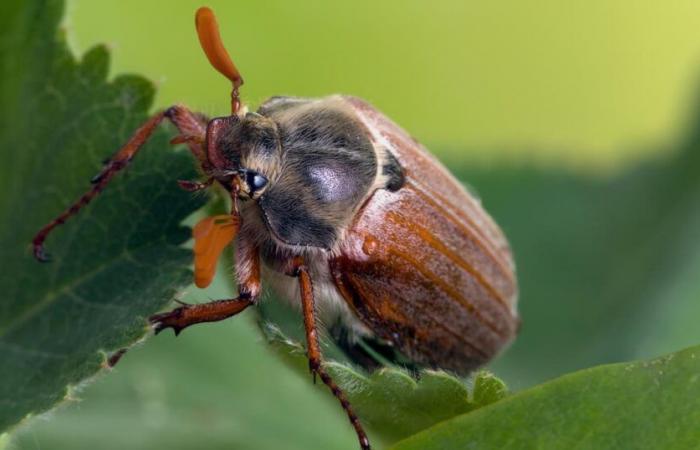Harmless to humans, cockchafers are coleopteran insects that are particularly destructive to crops. Zoom in on these pests.
Also known as Melontha melolonthathe cockchafer belongs to the Scarabidae family. Particularly destructive for plant roots, its larvae, recognizable by their whitish color, their C shape and their brown head, can measure up to 4 cm at the end of the larval stage. What damage can they cause to the garden? How to get rid of them? Our advice to effectively protect your crops from these pests.
Are cockchafers dangerous?
These insects are absolutely not dangerous for animals and humans. On the other hand, their impact is very different on garden and vegetable crops. Because they feed on the roots of plants, cockchafers, and especially their larvae, turn out to be formidable pests.
What are the preferred environments of cockchafers?
The larvae of these pests are particularly fond of roots, which is why their presence is very damaging to root vegetables such as potatoes and turnips. But in reality, they are likely to attack all types of plants. They are also very fond of strawberries and salads.
After spending three years underground as larvae, adult cockchafers, in search of laying sites, appreciate grassy areas in which they find favourable conditions for the development of their eggs.
Some trees such as birch or oak are also known to attract adult cockchafers which feed on their leaves.
How to prevent the proliferation of larvae in your garden?
Natural predators will be valuable allies in controlling cockchafer larvae populations. These tips will be useful to encourage their presence in the garden:
- Implement hedges varied. They will serve as a refuge for various birds that feed on larvae and various pests.
- Attract the hedgehogs by scattering piles of wood. These are essential to provide them with shelter.
- Promote biodiversity allowing some wild plants to grow.
- Don’t chase them away taupes they are useful for aerating the soil.
- Ban pesticides which tend to disturb the natural balance of the garden.
Peter Oetelshofen / stock.adobe.com
What solutions are there to get rid of cockchafers?
If cockchafers have already invaded your crops, you will need to use more targeted methods.
Hoe the soil regularly to remove the larvae. You can then collect and destroy them. Repeat this operation as often as possible until the pests are completely eliminated.
Use some coffee grounds which is known for its repellent action against certain insects, including cockchafers.
Introduce nematodes auxiliaries. These small worms have the particularity of feeding on larvae. Sold in bags in stores, you just need to dissolve them in the watering water.






